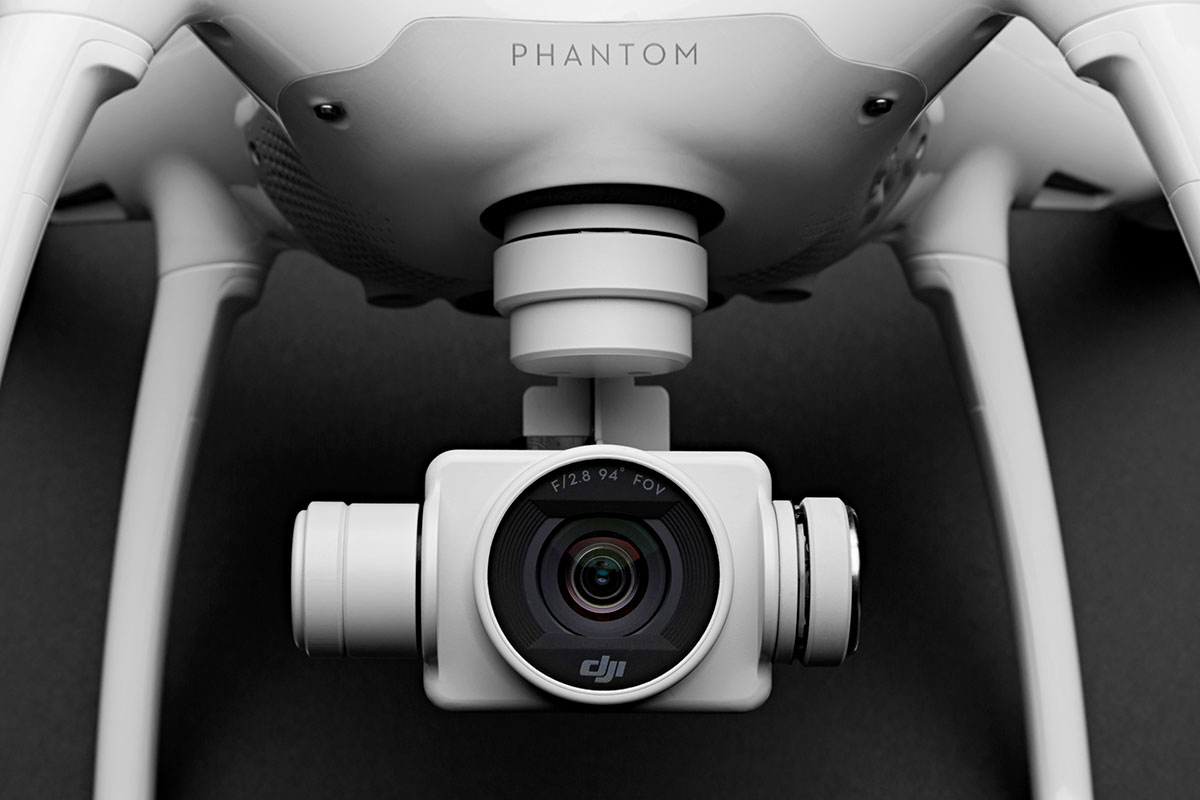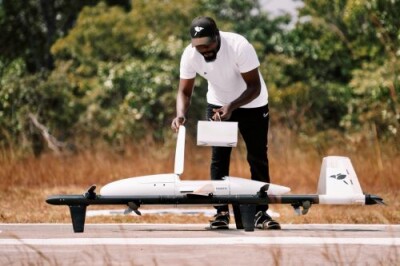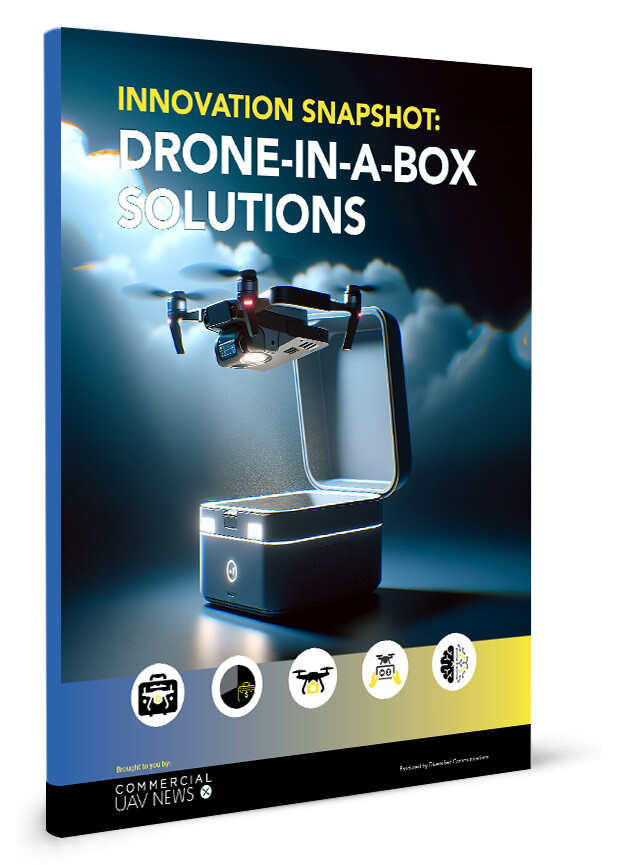While Part 107 has redefined what it will mean to operate a drone for commercial purposes, over 450,000 hobby flyers have registered via the sUAS Registration Service. The FAA has drawn a line in terms of regulation between those who are flying a drone for recreational purposes and those who aren’t, and various companies are working to ensure their products can appeal to either or both types of users. With a market share well north of 50%, DJI is already in prime position with both recreational and business consumer users.
DJI’s Phantom series has more or less become the default image we picture when we think about consumer drones, but the company has an entire line dedicated to industrial applications. Additionally, partnerships with companies like Propeller Aero are a strong indication that DJI is not looking to focus exclusively on the consumer market. What does that mean to commercial operators who might not have ever thought about a DJI product as a viable option for their project?To find out, I talked with Adam Lisberg, Corporate Communication Director, North America at DJI. Adam was able to share some critical insights around DJI’s position within the Drone Manufacturers Alliance, what he sees as some of the more creative uses of DJI products in the commercial space, how integration will soon become a much bigger topic of discussion and plenty more. Jeremiah Karpowicz: As we wait for Part 107 to go into effect in late August, many professionals are already discussing how it will alter their approach. Where do you see the changes associated with Part 107 having the most obvious impact?Adam Lisberg: We see Part 107 as not just a streamlined way for responsible users to increase the non-recreational use of drones, but as a clear statement from the FAA that drones are a key part of the national airspace going forward, and that they can be safely integrated into the national airspace. That means that more drones helping business, educational, nonprofit and government users accomplish tasks faster, more efficiently and more safely than before – and in some cases accomplishing tasks that were never before possible.Some organizations that once relied on a single pilot with a 333 exemption or outsourced their flights to a full-time professional will be able to bring those flights in-house by training their employees and getting them approved under Part 107; at the same time, professional drone pilots will see the demand for their services increasing as more organizations realize that the future of drones in their field is happening now. What specific opportunities do you see Part 107 creating or opening up for professionals? It’s hard to think of a professional undertaking that can’t potentially benefit from drones. Every day we see stories about contractors, surveyors, inspectors, scientists and academics integrating drones into their daily work.Two trends stick out: One, that the bureaucratic infrastructure around different industries is already beginning to accommodate drones. All the boring stuff that a business has to worry about – insurance, records retention, tax deductions and the like – are rapidly being incorporated into routine business practices. The other trend we’ve seen is that industries with a high level of competition are taking steps much sooner than others. Some businesses may wait and see how well their competitors take advantage of drones before entering the field themselves. But in others – such as journalism – are lined up and ready to take the Part 107 exam the first day it’s offered. No TV station wants to be the second one in town to provide a drone’s-eye view of the day’s news. News and analysis around Part 107 has dominated the headlines lately, but not long before that everyone was talking about the formation of the Drone Manufacturers Alliance. Can you tell us a little bit about how being part of the Drone Manufacturers Alliance makes sense for DJI in a way being part of the Small UAV Coalition did not? The drone industry is growing at an astonishing rate, and the more issues there are for everyone in the drone business to contend with, the more it makes sense for DJI to ally with a group of like-minded companies with similar interests focused on the recreational and business consumer market. We still consider ourselves kindred spirits with the Small UAV Coalition, but there are issues that are simply more important to us than to some of their members, and I’m sure the reverse is also true. Some industry observers saw this as a split between the interests of commercial and consumer companies. Is that an accurate interpretation of this news?Not really. We all share a common interest in the increasing use and acceptance of drones for all uses. Remember, this technology is still so new as to remain controversial in many areas, and all of us have an interest in showing that they can be safely and responsibly added to the national airspace – just as the FAA expects. Do you think DJI has fairly or unfairly developed a reputation as being the creators of “consumer” drones? We have something like 70% of the market for recreational and professional drones. We got there by relentlessly innovating the best technology, and our customers voted with their wallets. If someone wants to say we created the category, we won’t argue. Of course, there are plenty of companies and professionals using DJI products for commercial purposes, as well as countless kits that are geared toward specific markets which are created by 3rd parties. What are some of the more innovative and creative uses of your products that you’ve seen in the commercial space?One of the most innovative uses we’ve seen isn’t strictly commercial, but it’s pretty amazing – Snotbot. Whale researchers need to be able to study the health of these magnificent creatures, but any physical contact with them has the potential to cause trouble. Scientists figured out they could mount collection samples on our Phantom and Inspire drones, then fly them above whales and into the spray from their blowholes when they surface. It’s a far better situation for both the whales and the scientists, and I can guarantee you none of our 5,000 employees would have thought of that use when they were developing our drones.You can read about it and see an incredible video of Snotbot in action here: http://www.dji.com/newsroom/news/dji-snotbot-sea-of-cortez The Zenmuse is a product that hobbyists could use, but it’s clearly one that has applications in commercial markets that even go beyond professional videographers, doesn’t it?We have several cameras in the Zenmuse line, and they illustrate how DJI’s relentless focus on innovation can bring benefits for a wide variety of users. DJI did not start as a camera company – we started with better technology for radio controlled helicopters, then moved to flight controllers and quadcopters, then gimbals, then cameras. And as we’re developing new camera and gimbal technology, we’re also looking for new ways to use it – such as on our handheld Osmo mount and our Ronin series of professional mounts. The commitment DJI has made to the commercial space feels like it’s being underscored with announcements like your partnership with Measure. Was this partnership about creating more complete solutions for your current customers, or showcasing your products to a whole different set of people in a way that will speak directly to their needs?Many firms seek guidance on how to integrate drones into their operations, and while we believe our understanding of drone, gimbal and camera technology is second to none, we also know that we are far from experts in many of the particular industries that are products are used. That’s why it makes sense for us to partner with smart and successful companies that know their industries well, such as PrecisionHawk in agriculture, Propeller Aero in construction and mining and FLIR in sensors.Measure excels as a UAV service provider, and we want to support all players in the ecosystem who are helping firms get their UAV programs off the ground. What sort of details should operators be taking into account as they consider both how a drone will impact their business as well as what solution will best fit their needs?Companies need to be clear about what they hope to accomplish, and fortunately the body of industry-specific literature about how drones can make businesses better, safer and more efficient continues to grow. Read up on the possibilities. Prepare to devote some time to studying for your Part 107 test, as well as to learning to fly your craft safely and responsibly in a non-critical situation before putting it to work. You will of course be wowed by the first amazing images you see from your drone’s control screen; enjoy it, but remember that this is a business task as well, and stay focused on how this will improve your business case.
Of course, there are plenty of companies and professionals using DJI products for commercial purposes, as well as countless kits that are geared toward specific markets which are created by 3rd parties. What are some of the more innovative and creative uses of your products that you’ve seen in the commercial space?One of the most innovative uses we’ve seen isn’t strictly commercial, but it’s pretty amazing – Snotbot. Whale researchers need to be able to study the health of these magnificent creatures, but any physical contact with them has the potential to cause trouble. Scientists figured out they could mount collection samples on our Phantom and Inspire drones, then fly them above whales and into the spray from their blowholes when they surface. It’s a far better situation for both the whales and the scientists, and I can guarantee you none of our 5,000 employees would have thought of that use when they were developing our drones.You can read about it and see an incredible video of Snotbot in action here: http://www.dji.com/newsroom/news/dji-snotbot-sea-of-cortez The Zenmuse is a product that hobbyists could use, but it’s clearly one that has applications in commercial markets that even go beyond professional videographers, doesn’t it?We have several cameras in the Zenmuse line, and they illustrate how DJI’s relentless focus on innovation can bring benefits for a wide variety of users. DJI did not start as a camera company – we started with better technology for radio controlled helicopters, then moved to flight controllers and quadcopters, then gimbals, then cameras. And as we’re developing new camera and gimbal technology, we’re also looking for new ways to use it – such as on our handheld Osmo mount and our Ronin series of professional mounts. The commitment DJI has made to the commercial space feels like it’s being underscored with announcements like your partnership with Measure. Was this partnership about creating more complete solutions for your current customers, or showcasing your products to a whole different set of people in a way that will speak directly to their needs?Many firms seek guidance on how to integrate drones into their operations, and while we believe our understanding of drone, gimbal and camera technology is second to none, we also know that we are far from experts in many of the particular industries that are products are used. That’s why it makes sense for us to partner with smart and successful companies that know their industries well, such as PrecisionHawk in agriculture, Propeller Aero in construction and mining and FLIR in sensors.Measure excels as a UAV service provider, and we want to support all players in the ecosystem who are helping firms get their UAV programs off the ground. What sort of details should operators be taking into account as they consider both how a drone will impact their business as well as what solution will best fit their needs?Companies need to be clear about what they hope to accomplish, and fortunately the body of industry-specific literature about how drones can make businesses better, safer and more efficient continues to grow. Read up on the possibilities. Prepare to devote some time to studying for your Part 107 test, as well as to learning to fly your craft safely and responsibly in a non-critical situation before putting it to work. You will of course be wowed by the first amazing images you see from your drone’s control screen; enjoy it, but remember that this is a business task as well, and stay focused on how this will improve your business case.  Regulation has long been cited as the primary concern for commercial operators in the United States, but with Part 107 soon to take effect, do you think challenges with logistics or something else will become a far bigger concern? The skies won’t suddenly fill with drones the day Part 107 takes effect, but we anticipate interest from the general public – both good and bad – will increase once it does. As drones become more common, we can expect more public discussion of how this new technology will be integrated into society, similar to the fears and excitement that accompanied other disruptive technologies, such as the cellphone and the Internet.We believe Part 107 is an enormous vote of confidence in unmanned aerial systems by the FAA, and the White House has been equally encouraging about the expansion of drone technology. Meanwhile, many users don’t believe Part 107 went far enough: They want to seek waivers allowing flights over people, at night, above 400 feet and in other situations that Part 107 presently doesn’t allow. This won’t just be a conversation among the drone community and regulators anymore; anyone who supports the increased use of unmanned aerial systems needs to be aware that their actions will reverberate going forward. Speaking of challenges, battery life is another issue that continually pops up for operators. Will we see positive developments in this area over the next 6 to 12 months?We hope so. Every time we introduce a new drone, we are able to announce improvements to our battery technology. And with more than 1,500 engineers in our R&D department, we expect to keep that trend going. What advice would you have for any operator who isn’t sure a DJI product is going to be a fit for their commercial project? Try one. Seriously. There’s a reason we dominate the market – over and over, people evaluate the products on the marketplace and choose DJI. If you live near an authorized reseller, visit and try to evaluate our products yourself. If not, research deeply online. We’ll put our products up against anyone else’s in a head-to-head competition, and we expect anyone who does the same will realize that DJI makes the best products for their needs.
Regulation has long been cited as the primary concern for commercial operators in the United States, but with Part 107 soon to take effect, do you think challenges with logistics or something else will become a far bigger concern? The skies won’t suddenly fill with drones the day Part 107 takes effect, but we anticipate interest from the general public – both good and bad – will increase once it does. As drones become more common, we can expect more public discussion of how this new technology will be integrated into society, similar to the fears and excitement that accompanied other disruptive technologies, such as the cellphone and the Internet.We believe Part 107 is an enormous vote of confidence in unmanned aerial systems by the FAA, and the White House has been equally encouraging about the expansion of drone technology. Meanwhile, many users don’t believe Part 107 went far enough: They want to seek waivers allowing flights over people, at night, above 400 feet and in other situations that Part 107 presently doesn’t allow. This won’t just be a conversation among the drone community and regulators anymore; anyone who supports the increased use of unmanned aerial systems needs to be aware that their actions will reverberate going forward. Speaking of challenges, battery life is another issue that continually pops up for operators. Will we see positive developments in this area over the next 6 to 12 months?We hope so. Every time we introduce a new drone, we are able to announce improvements to our battery technology. And with more than 1,500 engineers in our R&D department, we expect to keep that trend going. What advice would you have for any operator who isn’t sure a DJI product is going to be a fit for their commercial project? Try one. Seriously. There’s a reason we dominate the market – over and over, people evaluate the products on the marketplace and choose DJI. If you live near an authorized reseller, visit and try to evaluate our products yourself. If not, research deeply online. We’ll put our products up against anyone else’s in a head-to-head competition, and we expect anyone who does the same will realize that DJI makes the best products for their needs. 














Comments